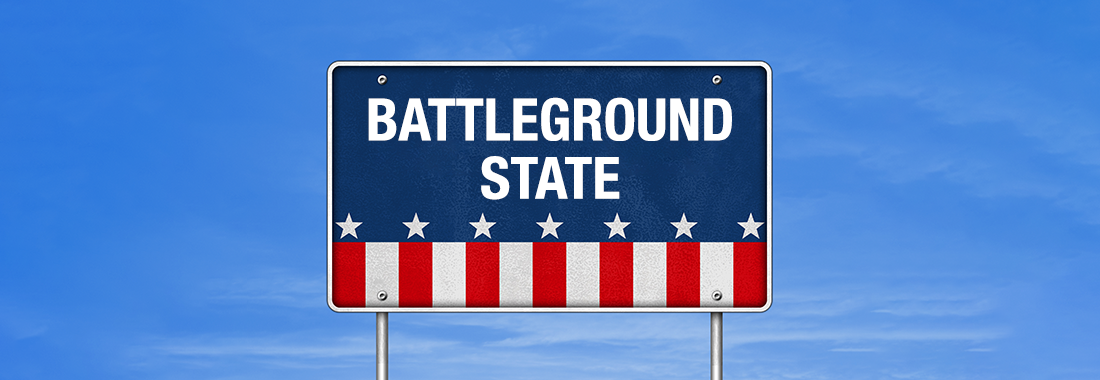Author: Larry N. Gerston, San Jose State University
Anyone with the slightest inkling of American politics knows presidential election behavior in some states is as predictable as the sun rising in the east. Even our students know this!
California and New York routinely vote overwhelmingly for Democratic nominees. Likewise, Texas and Alabama turn out in one-sided numbers for Republican nominees. Such outcomes in these states and most others routinely wind up in either the Democratic or Republican column election after election.
Still, there are a few states where voter choices are not so predictable, and that’s were our students find particular interest. We know these as “battleground states,” where the populations are so politically balanced that their presidential election results can align with the Democratic candidate one time, only to support the Republican candidate the next.
These are the states where candidates spend gobs of money in search of voter support; their outcomes also can often foretell an election result.
Two Kinds of Battleground States
Battleground states change with each election. To be sure, a few are traditional battlegrounds, that is, they are almost always uncertain.
Others take on a coveted status because over time they have moved from being reliable to uncertain. For purposes here, we can divide them into two categories: long-established and newcomers.
Most observers see Florida, North Carolina and Ohio as long-established battleground states. Together they have 62 electoral votes, slightly less than one quarter of the 270 electorates necessary for presidential victory.
This year, we have five newcomer states that qualify for battleground status. Arizona and Minnesota are newcomers because of recent presidential votes.
Minnesota, historically a dependable Democratic state, was carried by Hillary Clinton in 2016, but only by one percent. That has given the Donald Trump campaign the hope that Republicans might capture its 10 electoral votes this time.
On the other hand, Trump carried the once solidly Republican Arizona by only three percent in 2016. Courtesy of its rapidly changing demography, the Biden campaign has its eyes on the state’s 11 electoral votes in 2020.
The other new battleground states this year are Michigan (16 electoral votes), Pennsylvania (20 electoral votes) and Wisconsin (10 electoral votes). Together they account for 56 electoral votes, or about one-fifth the necessary number to win.
Known as the “Blue Wall” for their Democratic reliability, these states flipped to Republican Donald Trump in 2016 by a mere 77,744 votes out of 13,233,376 cast. Of all the shockwaves that hit the Democrats in 2016, none stunned them more than the incredibly narrow loss of these three states.
What It Means for the Election
Together, the eight battleground states amount to only 119 electoral votes of the 538 assigned to the 50 states and District of Columbia.
That means the other 42 states and their 419 electoral votes are usually predictable, but almost always divided enough to keep any candidates from winning with 270 votes necessary to win.
So, if your students want a good way to predict how the election is going on November 3, have them start with the returns from these states. Wherever most of these states land may give you a heads up on the eventual winner long before all the electoral votes are counted!
Questions for Further Thought
- Ask your students whether their state is a battleground state. If so, why?
- Ask your students if in this election year, a reliable state could become a battleground. If so, why?
- Ask your students if it’s possible for either Republican Donald Trump or Democrat Joe Biden to win the necessary 270 electoral votes without any battlegrounds. If so, how would they cobble together the winning combination?
For further insights and peer-tested tips on teaching an effective course, check out our full library of professional development resources.




